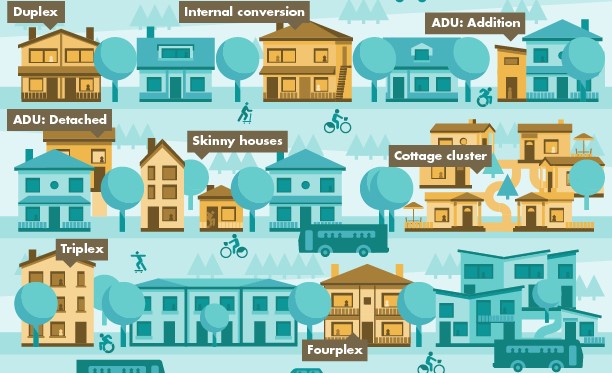The region as a whole does not have enough affordable housing, driven in part by an overall housing shortage. Cost burdened households include working families and households with middle and moderate incomes that are not eligible for subsidized housing programs, in addition to lower income households. When the cost of housing is high, it contributes to an overall cost of living that can destabilize households when it comes to accessing transportation, child care, health care, healthy food and other needs. The high cost of housing has a rippling effect on the regional economy with employers that have trouble filling jobs due to a lack of workforce housing and a greater number of households challenged in meeting basic needs. The region along with the state is experiencing a housing crisis.
Local and regional planners and officials are faced with an immense challenge of understanding the impacts of the housing crisis in our communities and what we can do to work on making housing accessible for families and individuals. Single-household detached homes account for most of the housing in our region and this contributes to the problem. Our centers and neighborhoods are lacking “missing middle” housing types that are affordable for moderate and lower income households, such as accessory dwellings, duplexes, cottage courts, row houses and other small scale 3-4 unit dwellings. Adding new options of many sizes and types at a scale and density compatible with existing neighborhoods can provide housing in demand by the workforce, smaller families, seniors and non-traditional households. Municipalities play an important role in regulating the development of new housing through local zoning and subdivision regulations, including whether infill and conversions in existing neighborhoods are possible.
A Neighborhood with Housing Options

